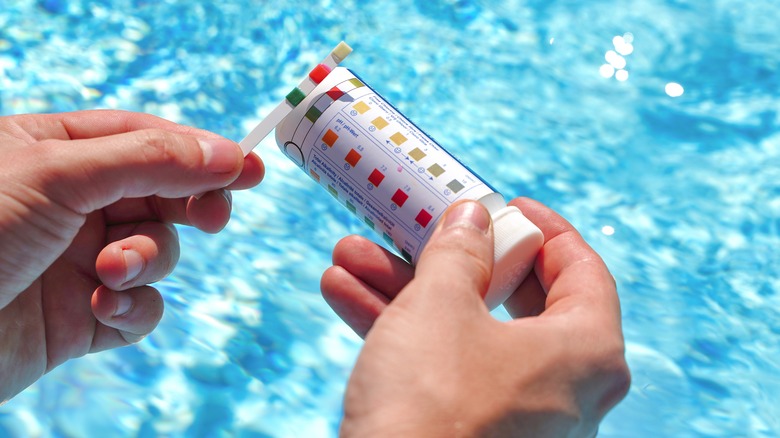A plastic kiddie pool is simple enough to turn over and dump out after a day of splashing and playing, but what happens when you have a larger, chlorinated pool that you need to change? Draining the chlorinated water from your pool onto the lawn isn’t ideal, but it shouldn’t cause much damage unless the water is heavily chlorinated or you are emptying it frequently like this.
Though your fragile, well-cared-for flower garden may not do as well, most grass types shouldn’t struggle with a small amount of diluted pool water added to them. That’s because the soil in most backyards is able to tolerate the higher acid levels for shorter periods of time. That’s why when the kids cannonball into the pool, that splash isn’t likely to damage the grass itself.
There are limits to this though. Draining a large, above-ground pool into the backyard isn’t a good idea simply because it will over-saturate the lawn, causing water logging and damage. More so, some community regulations don’t let you do this either. In cases of emptying a large pool, the better option may be to drain it with a hose directed to a safe area for a large amount of water or to have a professional water company extract it. Be sure you know if your city allows chlorinated pool water to go into the sewers before you do that.
Minimize the impact of chlorine on the grass and yard

To ensure there’s less risk to your lawn from draining the pool, there are two factors to consider — the first being minimizing an overabundance of chlorine being added to the lawn. If a chlorine tab somehow gets onto the grass or liquid chlorine gets poured onto the grass, you’ll want to rinse the area well with water as soon as possible, as too much can cause the grass to dry out, become brittle, and die.
Before you attempt to start the draining process, ensure the pool’s pH level is balanced. Most of the time, a pH of between 6 and 7, or slightly higher is good, according to Eden, with anything above 7.5 being too acidic for your grass. This depends on the type of grass as well.
In the days prior to draining your pool, you can safely stop using chlorine in it to bring that level down. This allows for a significant dilution in the water mixture that’s not likely to cause damage to the grass. Avoid using the pool without chlorine for sanitary reasons, though. You can also use the sun to help you, by simply leaving the pool uncovered or using balancing chemicals to bring the level back under control.
At the same time, you don’t want to drain a super bacteria-filled swamp of a pool you’ve not cleaned into your grass, either. Finding the balance here is important, and it really comes down to timing the pool draining and testing the pH level.
Monitor the amount of water draining into your lawn
It’s not just the chlorine in the pool but the amount of water you’re draining into the lawn that will cause damage. If you flood your grass with so much water that it becomes saturated, meaning it cannot absorb anything else, that pooling water will increase root rot damage, bacteria growth, and overall stress on the lawn.
There are a few simple ways to alleviate this risk. Start by draining from a hose so it can be controlled. Move the hose to different areas of the backyard to allow for a slowed, even release that’s more spread out, allowing more water to absorb into the soil. Encourage the water to run over rocky areas to minimize soil erosion.
Spread out the draining process over a few days. While inconvenient, it can preserve the grass and soil while also not overwhelming the local water table. As the pool is draining, avoid a lot of foot traffic in the area to help support the grass’s health. Don’t cut the grass when it’s this wet either. If it doesn’t dry out within a few days, you may want to call in a lawn professional to discuss properly grading the area to avoid additional drainage problems.